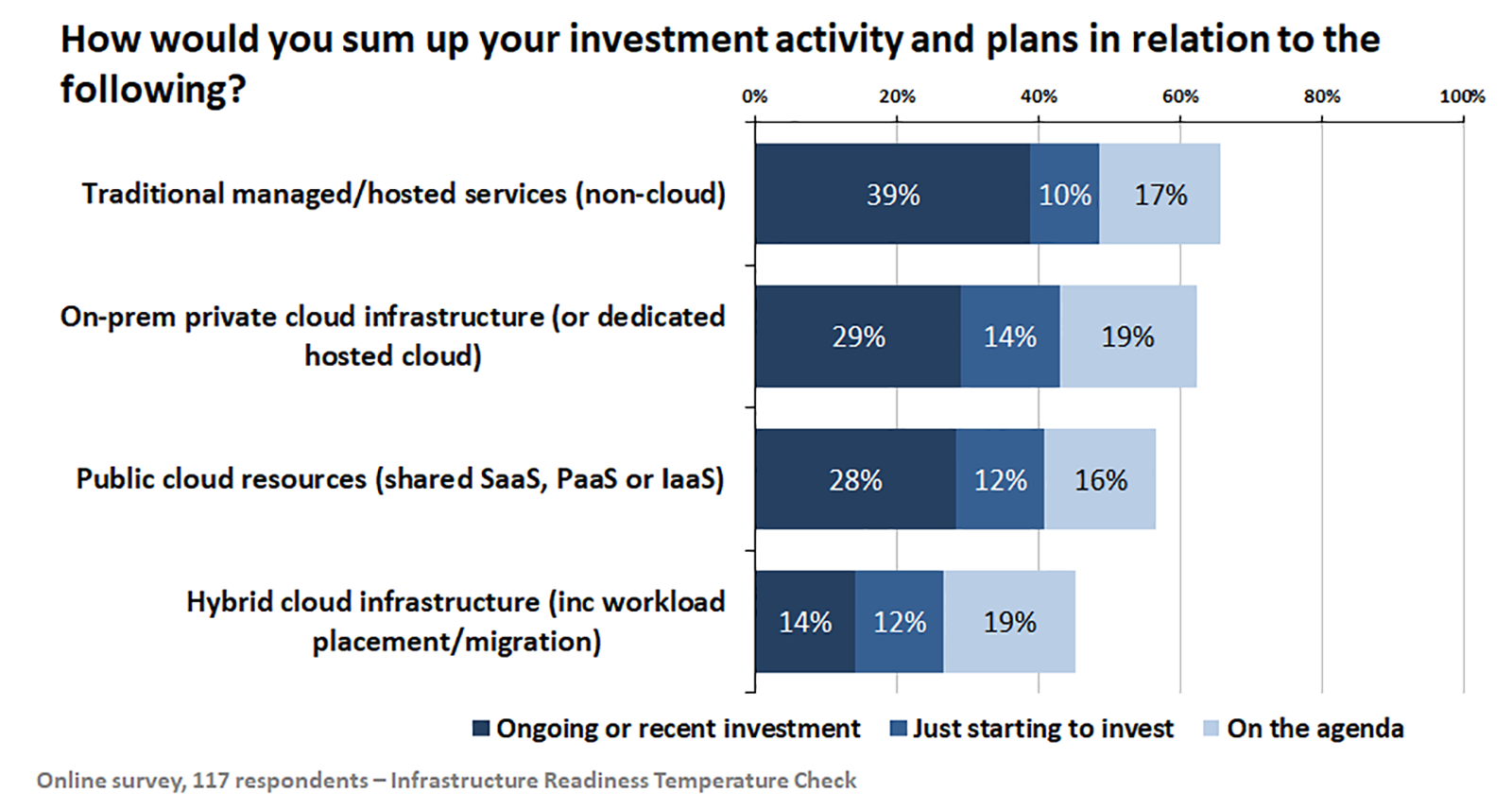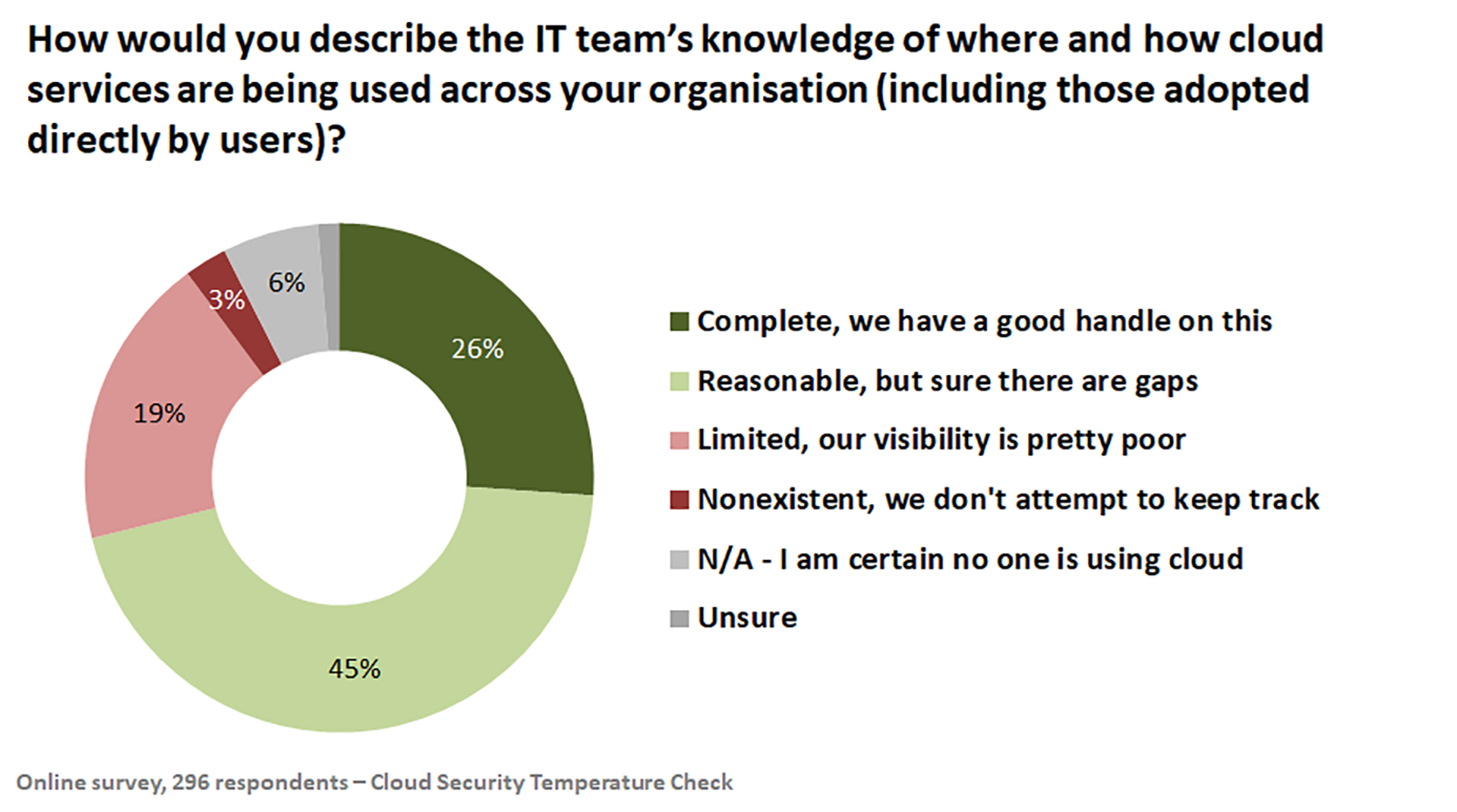There is no doubt that requirements for IT to deliver additional capabilities continue to increase. Users expect to be provided with new services rapidly and the advent of near universal mobile access for users, partners and customers can cause dramatic changes to workload demands in very short periods of time. The established approach to data centre management based around stable resources and strong change management is not suited to meet such demands.
In order to cater for the ever expanding range of services and requests for change, many organisations continue to increase the type of options they have available to help them respond more quickly and efficiently. To this end, the results from a recent online survey by Freeform Dynamics confirm that organisations are continuing to invest in a wide variety of data centre solutions (Figure 1).

The development of internal private cloud infrastructure or one hosted in an environment dedicated to the organisation is at least on the agenda for a majority of survey respondents. This is almost certainly due to the flexibility such systems are designed to provide. Similar numbers of organisations report investment plans for public cloud solutions of all types. While the chart does not distinguish between how much either of these solutions will be used, it does confirm that it is likely that many data centre managers and professionals will have to work in both public and private cloud environments.
Just as importantly the chart also reveals that Cloud is not taking over everything, certainly not in the short term. As can be seen, a higher proportion of the survey base has investment plans or recent activity in more traditional managed / hosted solutions. This confirms things are really becoming ‘hybrid’ in terms of data centre IT solutions residing on and off site.
However, this hybridisation may not yet be in the form typically marketed by evangelists who promote cloud as providing additional resources on demand to support variable workloads. The survey shows that considerably fewer organisations have yet to invest in solutions able to automatically place workloads on internal or external systems or to migrate workloads between them as conditions vary.
There are several potential explanations for this of which the most obvious is that this is a less well developed idea in many organisations. After all, as already mentioned, data centres have traditionally been very stable and often internally focussed. It takes time to change operational processes to cater for dynamic workloads. Another major obstacle may be found in the relative immaturity of IT management capabilities in dynamic hybrid environments.
Visibility of cloud services and who is using them is an essential need for data centre managers and admins to have, even for solutions which may be running independently of official IT support (so called shadow IT). But as the results from another Freeform Dynamics’ online survey highlight (Figure 2), almost three quarters of organisations lack complete visibility of what cloud solutions are being used and who is using them.

Furthermore, many respondents also commented on the relative immaturity of management solutions available from suppliers to manage even simple internal / external environments, never mind complex ecosystems. There is a clear need for effective tools to be developed to help data centre professionals work with hybrid environments where workloads migrate between internal and external systems, whether cloud or traditionally hosted. The survey also highlighted the need for security and Identity management capabilities to be able to cross internal and external boundaries without the requirement for extensive programming and scripting.
As ‘hybrid management’ solutions mature, the use of systems combining internal and external IT will likely increase, but there are other, potentially bigger, challenges to be addressed. Among the issues Data Centre managers will have to deal with are how to monitor internal and external Cloud usage and service quality, with particular emphasis on how to select which platform to use for which workload, at which time, as charges and SLA requirements vary.
This clearly requires better management tools, but it also needs data centre professionals to be able to accurately model the financial impact of the changing use of running applications and services on internal and external IT systems. Perhaps most importantly, as there is a requirement to support systems more dynamically in response to changing needs, it may also require the way IT is financed to be modified. Today many data centre budget models are still based around largely fixed annual charges based on asset acquisition and operation costs that take little account of changing business requirements, and sometimes little account of actual resource usage.
The evolving hybrid world will push Data Centre Infrastructure Management and service suppliers into new ways of working and accounting. This, more than the advent of ‘Cloud’ itself, will be far more of a revolution than evolution. Are you ready to change?
